-
 Bitcoin
Bitcoin $115900
-2.34% -
 Ethereum
Ethereum $3690
1.00% -
 XRP
XRP $3.109
-1.80% -
 Tether USDt
Tether USDt $1.000
-0.04% -
 BNB
BNB $771.5
0.22% -
 Solana
Solana $180.1
-3.43% -
 USDC
USDC $0.9998
0.00% -
 Dogecoin
Dogecoin $0.2293
-3.53% -
 TRON
TRON $0.3141
0.87% -
 Cardano
Cardano $0.8016
-1.19% -
 Hyperliquid
Hyperliquid $43.00
-0.08% -
 Stellar
Stellar $0.4211
-2.15% -
 Sui
Sui $3.737
0.11% -
 Chainlink
Chainlink $18.06
0.04% -
 Bitcoin Cash
Bitcoin Cash $546.9
4.97% -
 Hedera
Hedera $0.2440
0.46% -
 Avalanche
Avalanche $23.60
-0.84% -
 Litecoin
Litecoin $114.7
1.44% -
 UNUS SED LEO
UNUS SED LEO $8.975
-0.26% -
 Shiba Inu
Shiba Inu $0.00001364
-0.20% -
 Toncoin
Toncoin $3.137
-0.88% -
 Ethena USDe
Ethena USDe $1.001
-0.04% -
 Uniswap
Uniswap $10.31
1.32% -
 Polkadot
Polkadot $4.013
0.02% -
 Monero
Monero $324.6
1.07% -
 Dai
Dai $1.000
-0.01% -
 Bitget Token
Bitget Token $4.515
-1.21% -
 Pepe
Pepe $0.00001225
-2.78% -
 Aave
Aave $292.1
1.36% -
 Cronos
Cronos $0.1296
2.24%
什麼是區塊鏈的跨鏈橋?如何確保資產安全?
跨鏈橋實現了區塊鏈之間的資產和數據傳輸,增強了Defi生態系統中的互操作性和流動性,同時通過多簽名的錢包和審核確保安全性。
2025/04/27 15:22
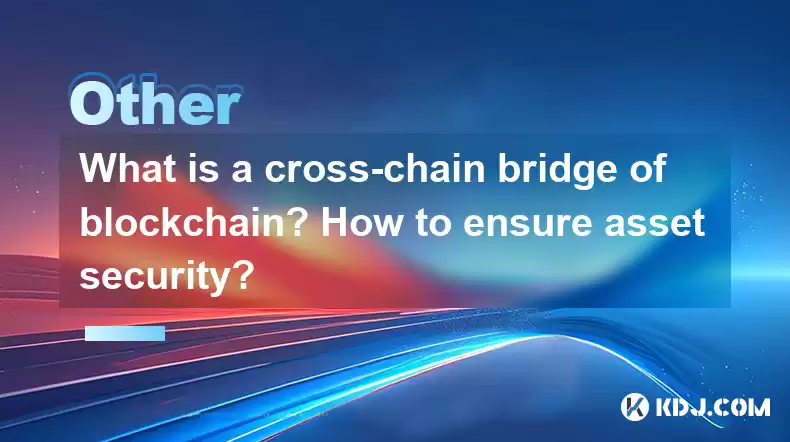
區塊鏈技術領域中的跨鏈橋充當至關重要的基礎架構,可實現不同區塊鍊網絡之間資產和數據的傳輸。該功能對於增強各種分散生態系統的互操作性和流動性至關重要。跨鏈橋充當導管,使用戶可以將其加密貨幣,代幣或其他數字資產從一個區塊鏈移到另一個區塊鏈。本文將深入研究跨鏈橋的機制,其重要性以及確保在這些交易中資產安全的措施。
什麼是跨鏈橋?
跨鏈橋是一組協議或一組智能合約,可促進不同區塊鏈之間資產的轉移。這些橋樑對於分散的金融(DEFI)生態系統至關重要,因為它們允許用戶利用多個區塊鏈的獨特功能和優勢。例如,用戶可能希望將資產從以太坊轉移到二元智能鏈,以利用較低的交易費用或更快的交易時間。
跨鏈橋樑通過將資產鎖定在源區塊鏈上並在目標區塊鏈上造成等效資產來起作用。一旦用戶決定將資產向後移動,該過程就會顛倒:目標區塊鏈上的資產被燃燒,並發布源區塊鏈上的鎖定資產。該機制可確保資產的總供應在整個網絡中保持恆定。
跨鏈橋的類型
有幾種類型的跨鏈橋,每個橋樑都有自己的操作和安全模型。最常見的類型包括:
鎖定和薄荷橋:這些橋樑將資產鎖定在源鏈上,並在目標鏈上薄荷新的代幣。鑄造的代幣通過鎖定資產將1:1備份,以確保該值在兩個鏈中保持一致。
燒傷和薄荷橋:在此模型中,源鏈上的資產被燃燒,並且在目標鏈上鑄造了等效量的新令牌。當用戶想要將資產移回後,目標鏈上的令牌被燃燒,並且在源鏈上鑄造了新的令牌。
包裝令牌:這些代表另一個區塊鏈上的另一個資產。例如,包裝Bitcoin(WBTC)是代表Bitcoin的以太坊區塊鏈上的令牌。該過程涉及在Bitcoin區塊鏈上鎖定Bitcoin,並在以太坊上造成WBTC。
確保跨鏈橋的資產安全
確保跨鏈傳輸期間資產的安全至關重要。採用了幾種機制來維護資產並保持交易的完整性。其中包括:
多簽名錢包:許多跨鏈橋使用多簽名錢包來管理資產的鎖定和解鎖。多簽名錢包需要在執行任何交易之前多個簽名(或批准),從而增加了額外的安全性。
分散治理:一些橋樑在分散的治理模型下運作,在該模型中,關於橋樑的運營和安全性的決定是由利益相關者社區共同做出的。這種方法有助於防止集中的故障點並增強系統的整體安全性。
定期審核和安全檢查:為了確保橋樑的持續安全性,進行定期審核和安全檢查。這些審核通常是由專門從事區塊鏈技術的第三方安全公司進行的,以確保及時確定和解決任何漏洞。
保險基金:一些跨鏈橋樑擁有適當的保險資金,以彌補因黑客或漏洞而導致的潛在損失。這些資金通常由部分交易費用資助,並為用戶提供額外的保護層。
如何使用跨鏈橋
使用跨鏈橋涉及多個步驟,確切的過程可能會根據特定的橋樑和所涉及的區塊鏈而變化。這是有關如何使用跨鏈橋的一般指南:
選擇一個跨鏈橋:選擇一個信譽良好的跨鏈橋,該橋支撐您要在之間轉移資產的區塊鏈。研究橋樑的安全措施,費用和用戶評論,以確保它滿足您的需求。
連接錢包:導航到橋樑的網站或應用程序,然後連接加密貨幣錢包。確保您的錢包支持您打算使用的區塊鏈。
啟動轉移:指定要轉移的資產和目標區塊鏈的資產量。按照屏幕上的說明啟動轉移。這通常涉及確認錢包上的交易。
等待確認:啟動轉移後,您需要等待在源和目標區塊鏈上確認交易。根據所涉及的區塊鏈,此過程可能需要幾分鐘到幾個小時。
驗證傳輸:轉移完成後,請驗證資產已成功地轉移到目標區塊鏈。您可以通過檢查目標區塊鏈上的錢包平衡來做到這一點。
共同的挑戰和解決方案
儘管有好處,跨鏈橋面臨著幾個挑戰,包括安全風險,可伸縮性問題和用戶體驗複雜性。以下是一些共同的挑戰及其解決方案:
安全風險:如前所述,跨鏈橋樑容易受到黑客和漏洞的影響。為了減輕這些風險,橋樑採用了強大的安全措施,例如多簽名錢包,分散治理和常規審計。
可伸縮性問題:高交易量可能導致交通擁堵和跨鏈橋的延誤。為了解決這個問題,一些橋樑實現了2層擴展解決方案或優化其智能合約設計以處理更高的吞吐量。
用戶體驗:使用跨鏈橋的過程對於新用戶來說很複雜。為了改善用戶體驗,橋樑通常提供詳細的指南,用戶友好的接口和客戶支持,以在整個轉移過程中為用戶提供幫助。
常見問題
問:可以將跨鏈橋用於任何類型的資產嗎?
答:雖然交叉鏈橋主要用於轉移加密貨幣和代幣,但一些橋樑還支持其他類型的數字資產的轉移,例如無依據的代幣(NFTS)。但是,所支持的特定資產類型可能會因橋樑和所涉及的區塊鏈而有所不同。
問:使用跨鏈橋有任何費用嗎?
答:是的,大多數跨鏈橋樑為其服務收取費用。這些費用可以包括源和目標區塊鏈的交易費用,以及使用橋樑本身的費用。確切的費用結構可能會因橋樑和所進行的特定轉移而有所不同。
問:完成跨鏈轉移需要多長時間?
答:跨鏈轉移的持續時間可能會因幾個因素而異,包括所涉及的區塊鏈,當前的網絡擁塞和所使用的特定橋樑。通常,轉移可能需要幾分鐘到幾個小時。
問:我可以使用跨鏈橋在任何兩個區塊鏈之間轉移資產嗎?
答:並非所有的跨鏈橋都支持任何兩個區塊鏈之間的轉移。橋支撐的特定區塊鏈可能會有所不同,因此檢查橋樑的文檔很重要,以確保其支持您要使用的區塊鏈。
免責聲明:info@kdj.com
所提供的資訊並非交易建議。 kDJ.com對任何基於本文提供的資訊進行的投資不承擔任何責任。加密貨幣波動性較大,建議您充分研究後謹慎投資!
如果您認為本網站使用的內容侵犯了您的版權,請立即聯絡我們(info@kdj.com),我們將及時刪除。
- Solana,Altcoins和Coinbase:什麼是嗡嗡聲?
- 2025-07-26 06:30:12
- 以太坊,百事可樂預售和市場食慾:什麼是嗡嗡聲?
- 2025-07-26 06:50:12
- Token6900:下一個大模因硬幣?預售加熱!
- 2025-07-26 05:30:35
- Ondo突破評估:鯨魚,錢包,下一步是什麼?
- 2025-07-26 05:30:35
- 卡巴(Kaspa)最牢固的月份揭示了:新的數據震驚kas貿易商!
- 2025-07-26 04:30:12
- 跨境支付革命:穩定幣和付款提供商領導該費用
- 2025-07-26 04:50:12
相關知識

區塊鏈上的令牌是什麼?
2025-07-21 07:00:37
了解令牌的概念在區塊鏈技術領域中,令牌是區塊鍊網絡上存在的資產或實用程序的數字表示。與加密貨幣(例如Bitcoin或以太坊(以太坊)原產於其自己的區塊鏈,代幣是在現有的區塊鏈平台之上創建的。這些令牌可以代表各種形式的價值,包括但不限於貨幣,資產,權利或獲得服務。這些令牌的創建和管理通常受定義其規則和...
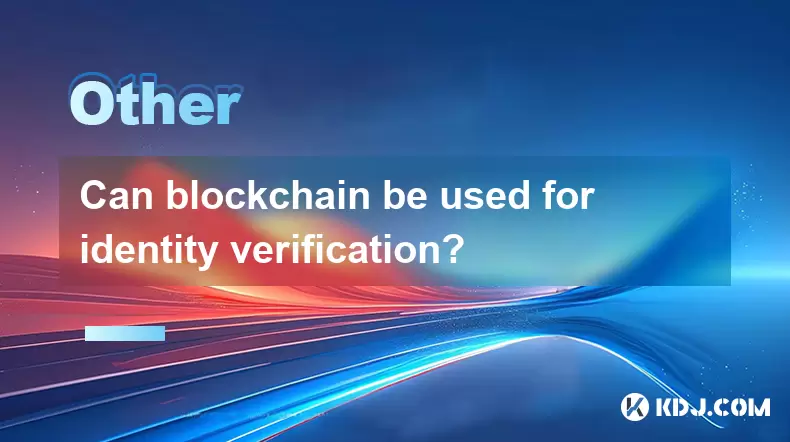
可以將區塊鏈用於身份驗證嗎?
2025-07-18 14:14:50
了解數字時代的身份驗證在現代數字景觀中,身份驗證已成為確保安全和信任在線互動的關鍵組成部分。傳統方法通常依靠集中系統,這些系統可能容易受到數據洩露和身份盜用的影響。區塊鏈技術的出現引入了一個分散的替代方案,該替代方案可以徹底改變身份的管理和認證。區塊鏈不變的分類帳系統允許創建防篡改記錄,使其成為身份...
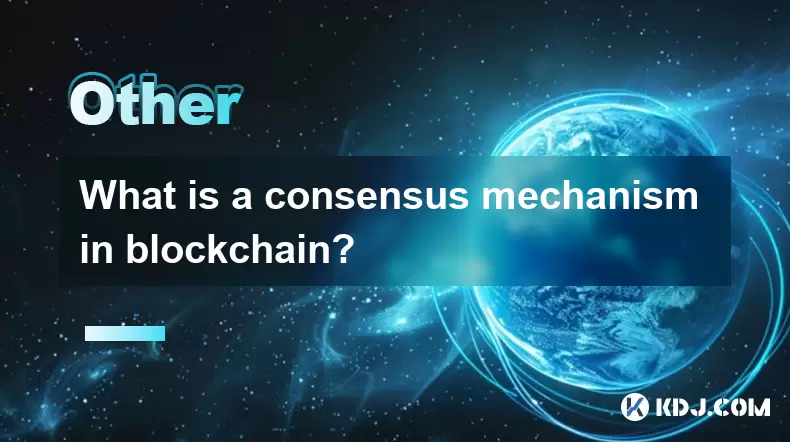
區塊鏈中的共識機制是什麼?
2025-07-21 03:01:19
了解共識機制的基礎知識共識機制是任何區塊鍊網絡的關鍵組成部分。它指的是節點(參與網絡的計算機)對交易的有效性和分類帳的當前狀態一致的過程。如果沒有中央權威監督操作,區塊鏈技術就依靠這些機制來確保分散參與者之間的信任和安全。在傳統金融系統中,中央銀行或金融機構驗證交易。但是,在像區塊鏈這樣的分散系統中...
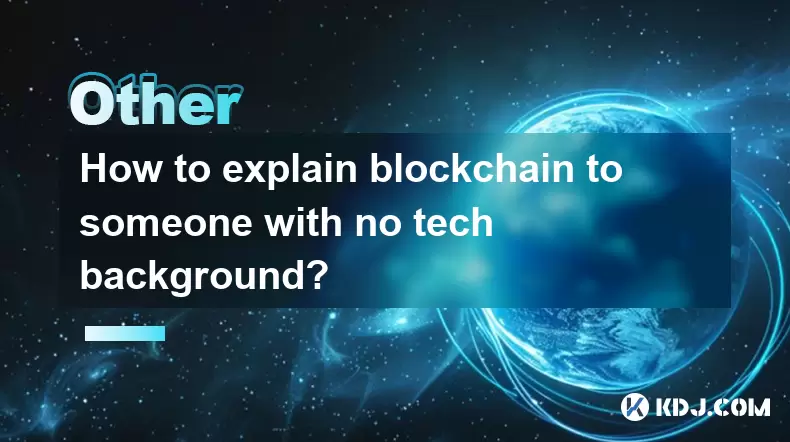
如何向沒有技術背景的人解釋區塊鏈?
2025-07-18 23:08:13
了解區塊鏈的基礎知識為了向沒有技術背景的人解釋區塊鏈,必須從簡單的類比開始,避免使用技術術語。將區塊鏈視為記錄交易的共享數字筆記本。本筆記本不歸任何一個人或組織所有。取而代之的是,它可供參與網絡中的每個人使用,任何人都可以檢查其中所寫的內容。每次發生事務時,它都會添加到一個塊中,一旦該塊已滿,它將連...

誰發明了區塊鏈技術?
2025-07-23 01:28:21
區塊鏈技術的起源區塊鏈技術並未來自單個發明家或機構。取而代之的是,它通過數十年來的一系列學術論文和加密進步而發展。在“區塊鏈”一詞廣泛認可之前,研究人員探索了基礎區塊鏈(例如分佈式分類帳,加密哈希和點對點網絡)的核心概念。這項技術最早的基礎之一是在1980年代和1990年代通過密碼學和計算機科學的工...
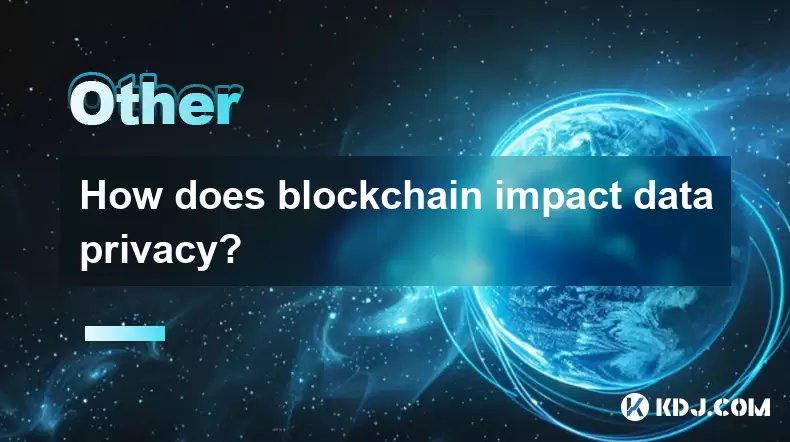
區塊鏈如何影響數據隱私?
2025-07-21 14:21:55
了解區塊鏈在數據隱私中的作用區塊鏈技術最初是作為Bitcoin等加密貨幣的基礎架構開發的,已演變為一個有力的工具,用於保護和管理數據。它的分散性質從根本上改變了數據的存儲,共享和訪問方式,這對數據隱私產生了重大影響。與傳統的集中式系統不同,單個實體控制數據,區塊鏈在節點網絡上分配它,從而使未經授權的...

區塊鏈上的令牌是什麼?
2025-07-21 07:00:37
了解令牌的概念在區塊鏈技術領域中,令牌是區塊鍊網絡上存在的資產或實用程序的數字表示。與加密貨幣(例如Bitcoin或以太坊(以太坊)原產於其自己的區塊鏈,代幣是在現有的區塊鏈平台之上創建的。這些令牌可以代表各種形式的價值,包括但不限於貨幣,資產,權利或獲得服務。這些令牌的創建和管理通常受定義其規則和...

可以將區塊鏈用於身份驗證嗎?
2025-07-18 14:14:50
了解數字時代的身份驗證在現代數字景觀中,身份驗證已成為確保安全和信任在線互動的關鍵組成部分。傳統方法通常依靠集中系統,這些系統可能容易受到數據洩露和身份盜用的影響。區塊鏈技術的出現引入了一個分散的替代方案,該替代方案可以徹底改變身份的管理和認證。區塊鏈不變的分類帳系統允許創建防篡改記錄,使其成為身份...

區塊鏈中的共識機制是什麼?
2025-07-21 03:01:19
了解共識機制的基礎知識共識機制是任何區塊鍊網絡的關鍵組成部分。它指的是節點(參與網絡的計算機)對交易的有效性和分類帳的當前狀態一致的過程。如果沒有中央權威監督操作,區塊鏈技術就依靠這些機制來確保分散參與者之間的信任和安全。在傳統金融系統中,中央銀行或金融機構驗證交易。但是,在像區塊鏈這樣的分散系統中...

如何向沒有技術背景的人解釋區塊鏈?
2025-07-18 23:08:13
了解區塊鏈的基礎知識為了向沒有技術背景的人解釋區塊鏈,必須從簡單的類比開始,避免使用技術術語。將區塊鏈視為記錄交易的共享數字筆記本。本筆記本不歸任何一個人或組織所有。取而代之的是,它可供參與網絡中的每個人使用,任何人都可以檢查其中所寫的內容。每次發生事務時,它都會添加到一個塊中,一旦該塊已滿,它將連...

誰發明了區塊鏈技術?
2025-07-23 01:28:21
區塊鏈技術的起源區塊鏈技術並未來自單個發明家或機構。取而代之的是,它通過數十年來的一系列學術論文和加密進步而發展。在“區塊鏈”一詞廣泛認可之前,研究人員探索了基礎區塊鏈(例如分佈式分類帳,加密哈希和點對點網絡)的核心概念。這項技術最早的基礎之一是在1980年代和1990年代通過密碼學和計算機科學的工...

區塊鏈如何影響數據隱私?
2025-07-21 14:21:55
了解區塊鏈在數據隱私中的作用區塊鏈技術最初是作為Bitcoin等加密貨幣的基礎架構開發的,已演變為一個有力的工具,用於保護和管理數據。它的分散性質從根本上改變了數據的存儲,共享和訪問方式,這對數據隱私產生了重大影響。與傳統的集中式系統不同,單個實體控制數據,區塊鏈在節點網絡上分配它,從而使未經授權的...
看所有文章

























































































